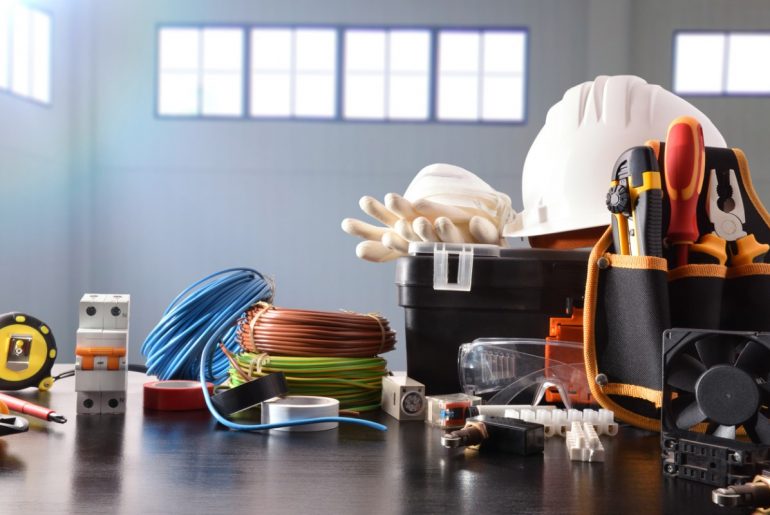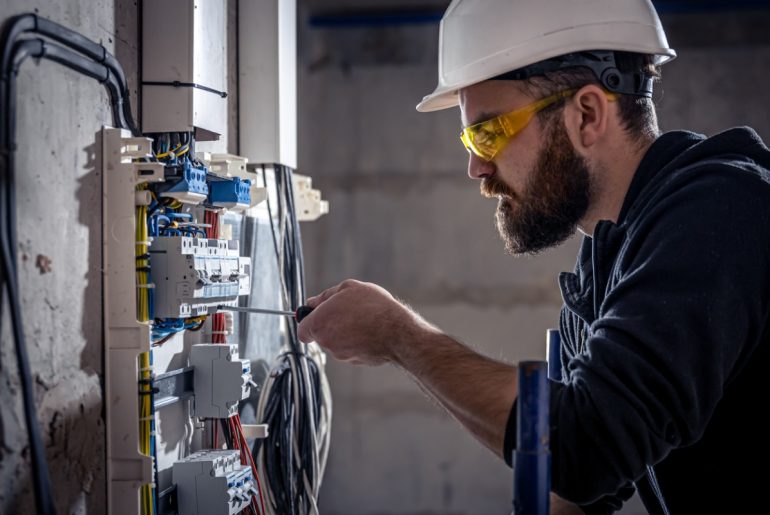Any plumbing contractor, whether they’ve been fixing pipes for thirty years or have just started in the industry, knows that estimating plumbing jobs is a crucial part of their business. A fair quote is essential not only to gain your client’s trust, land the contract, and avoid disputes but also to ensure that you’re turning a profit—after all, that’s why you’re in business.
Despite the best of intentions, figuring out how to price plumbing jobs is easier said than done. To help demystify this daunting process, we’re going to go over everything you need to know on how to estimate plumbing jobs with one goal in mind: making sure your prices reflect your overhead costs like salaries, training, and demand, as well as allow some cushion for any issues you may run into.
- Step 1: Ask customers what times they are available, then upload the request into Route Manager.
- Step 2: Confirm the planned arrival time – and stick to it.
- Step 3: Equip your sales and customer support team with visibility into live ETAs via GPS tracking.
- Step 4: Use Route Manager 360 notes to stay updated on customer satisfaction.
How to Set Plumbing Quotations: 4 Things That Affect Your Pricing
Before we talk specifically about how to calculate your hourly rate, let’s discuss some factors that affect plumbing pricing that you should keep in mind.
1. Industry Standards for Job Estimates
Industry standards are a good place to start when determining pricing for plumbing jobs. On average, plumbers make anywhere from $45 to $200 per hour, or from $175 to $450 for typical jobs. Using these industry standards as a guideline, it’s helpful to examine average costs from experienced plumbers in your region and work from there.
Keep in mind that plumbers generally require a one to two-hour minimum to account for travel time, but you can also charge a service fee or a trip fee. Flat rates are standard for jobs like toilet and shower installation, and plumbers may also charge in time blocks when they know how long specific tasks will take them.
2. Your Salary Needs
Once you’ve done some research on what plumbers charge in your area, make sure you understand your own salary needs. Your rates will have to meet your personal needs, so take sufficient time to understand them.
Some essential questions to ask yourself when determining salary needs are things like how much money you need to earn to keep the doors to your business open, what your payroll needs look like, and whether or not you offer free quotes. If you do provide free quotes, you’ll want to factor this time into your rates.
3. Ease of Access and Job Size
Before giving any estimate, it’s critical that you fully assess the site. While some plumbing repair jobs may seem straightforward, further inspection may reveal unforeseen challenges that increase the overall cost for the client and can also result in less profit for you. Some circumstances are impossible to anticipate, but your client will appreciate forewarning about the ones you can see.
Next, consider the size of the job. More in-depth jobs will require research, which is time you’ll need to add to the plumbing job estimate. Bigger jobs may also require subcontractors that have their own permit—and payment—requirements. Factor in the cost of research and subcontractors when determining your estimate, and add three percent as a buffer.
4. Extra Materials and Expenses
Some jobs require the use of additional materials and tools, which are generally not included in the estimate. These materials are charged separately.
Other expenses, such as debris removal in some cases, are another set of considerations that must be accounted for, as well as fully explained to the customer. It’s also helpful to educate the client on typical scenarios that drive up expenses.
Join Our Facebook Group
Plumbing Quote Estimator
Now let’s look at how to estimate plumbing jobs and develop plumbing quotes.
Step 1: Determine Your Hourly Wage
The first step to estimating plumbing jobs is to determine your hourly wage, and the calculation for this is simple. Divide the amount of money you want to earn every week by the total number of hours you can bill.
Remember that not every hour of a 40-hour workweek is billable—somewhere around 12 hours per week are dedicated to operational aspects of your business or things like driving to and from sites. You should then divide your weekly pay goal by 28 hours, and add 3-4% for vacation, sick days, taxes, etc.
Step 2: Compute Your Overhead
Overhead refers to the costs that you must cover to keep your business running. These costs can include things like:
- Trucks
- Electricity
- Office space
- Marketing
- Fuel
Obtaining an accurate figure for your overhead is a critical part of getting your pricing right, so you may want to consult with an accountant to make sure you’ve accounted for all these costs. Once you have, your hourly rate should be high enough to cover all your business’s overhead costs. To make sure it is, add about another 30 percent to your hourly rate.
Step 3: Calculate Your Hourly Rate
Now it’s time to calculate your hourly rate, keeping in mind the profit that you would like to earn from your plumbing business after all other costs are covered. Anywhere from 20 to 25 percent is a realistic profit margin that will keep costs fair to clients. Add 20 to 25 percent to your base hourly rate to give you your final billable hourly rate.
Step 4: Generate Your Quote/Estimate
Once you’ve got your final billable hourly rate calculated, most of the legwork is out of the way, and you can start quoting clients.
First, you’ll have to outline all of the job’s costs. Figure out how much taxes, permits, and any materials will cost you. You’ll also need to add in the price of subcontractors here if you’re using them.
Then, estimate to the best of your ability the number of hours you’ll need to finish the work.
Multiply that figure by your hourly rate, and add the price of the materials or subcontracting, and you’ve got your quote!




